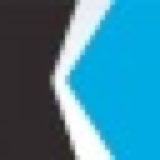Information
-
Document No.
-
Project name
-
Conducted on
-
Prepared by
-
Location
-
Personnel
-
KPL inspector
Excavation
-
One call made by all excavators?
-
Positive response by all owners/operators?
-
Proper markings of pipeline?
-
Maintain proper markings of pipelines?
-
Maintain safe distance from pipelines?
Line Break
-
Does isolation procedure exist and is it being used?
-
Is the LOTO satisfactory?
-
Has the line been properly de-pressurized/de-inventoried?
-
Is the verification method adequate?
Hot work
-
Welding procedure in place?
-
Line pressure within procedure parameters?
-
Atmospheric monitoring performed correctly?
-
Adequate flow on pipeline?
Stopple
-
Stopple procedure in place?
-
Field checklist modified for specific job?
-
Stop points clearly identified for the task?
-
Project manager on site?
Knowledge section (Line locating)
-
What actions would you take should you not receive positive responses from your One Call?
-
Answer: Stop! Leverage operations personnel, and other capabilities,to use their knowledge and relationships.
-
Answer: Elevate the situation to my supervisor for further instruction.
-
Describe the types of marking that you must see prior to excavating?
-
Answer: Should have marked the proposed excavation in white paint. Other parties should have marked piping in the area every 10 feet. KPL pipelines should be marked and staked every 10 feet and 30 feet beyond the proposed excavation.
-
What methods do you use to maintain markings?
-
Answer: Continually mark the pipeline location. Probe 3 feet and dig 1 foot, repeat, restate as we go. Mark with paint, stakes, and probes, ect.
-
Describe where mechanical digging is allowed
-
Answer: No closer that 1 foot from circumference of the pipe or other buried utilities
-
When stakes are marking the pipeline, what is the maximum distance between stakes? How far beyond the proposed planned excavation should the stakes be?
-
Answer: 10 and 30
Initial Line Break
-
How do you verify zero energy state prior to line break
-
PCC, bleeds, local pressure indicators, temp gauges. Some kind of positive indication of no energy
-
In multiple pipeline corridors how do you know your on the right pipe?
-
Measure from AGM, pipe size, alignment sheets, probing, locating and marking.
-
Describe the methods that you used for first cut
-
Cold cutting. I.e. Pipe cutters; air saw with oil
-
Describe the de pressurizing, de inventorying process that you will follow for this task.
-
Vac trucks, sump, flaring, containment...etc.
Knowledge Section (hot work)
-
Per the welding manual what is the minimum wall thickness that you are able to weld on and how did you verify the wall thickness?
-
Answer: dependent upon pipe diameter, actual wall thickness, and the pipe grade (specified minimum yield strength for the pipe)
-
How did you determine the correct welding procedure?
-
Answer: based on wall thickness of the pipeline. The welding has charts for each pipe size and type that dictate the pressure allowed inside the piping to weld on it.
-
Once it is determined that hot work is needed on the pipeline. Describe the process of developing the procedure for the task.
-
Answer: welding manual provides guidance based on actual wall thickness, pressures, and pipe sizes and pipe grade. The inspector in the field will consult the manual, and/or the KPL chief inspector will assist in determining the allowed path forward. The PCC is also contacted prior to beginning the weld to determine pressure is within limits set by the manual
-
How do you determine acceptable LEL inside the pipeline?
-
Answer: hot tap to have an opening, TOR, Cold cut first, local bleeds.
Stopple
-
Describe the functional leak test performed.
-
Weld stopple in place, install stopple machine, pressure up through stopple machine and hold for 15 minutes.
-
Describe methods used to comply with the bolted flange assembly
-
Flange rating, type of bolt, thread lubricant, torquing pattern. etc.














